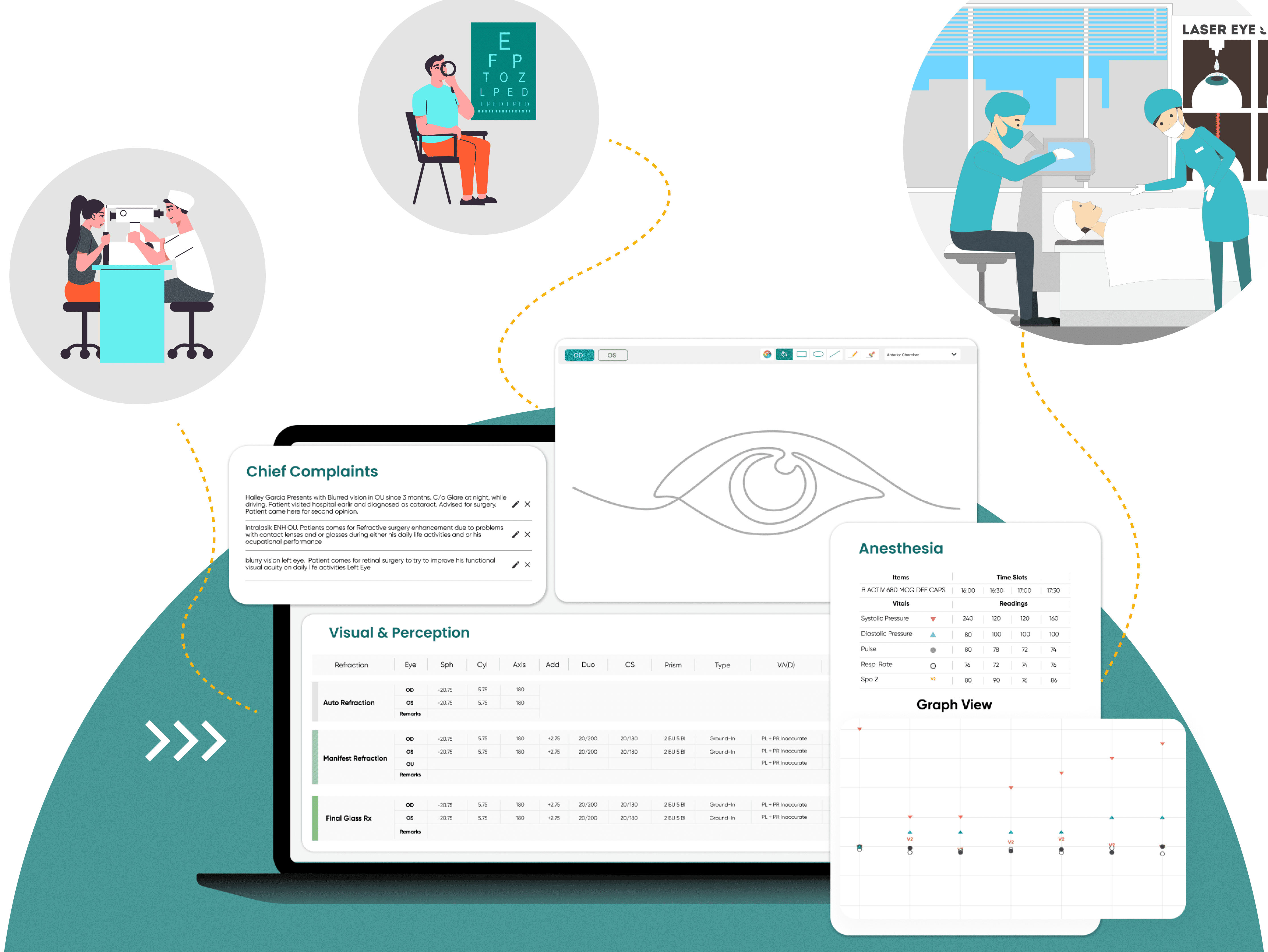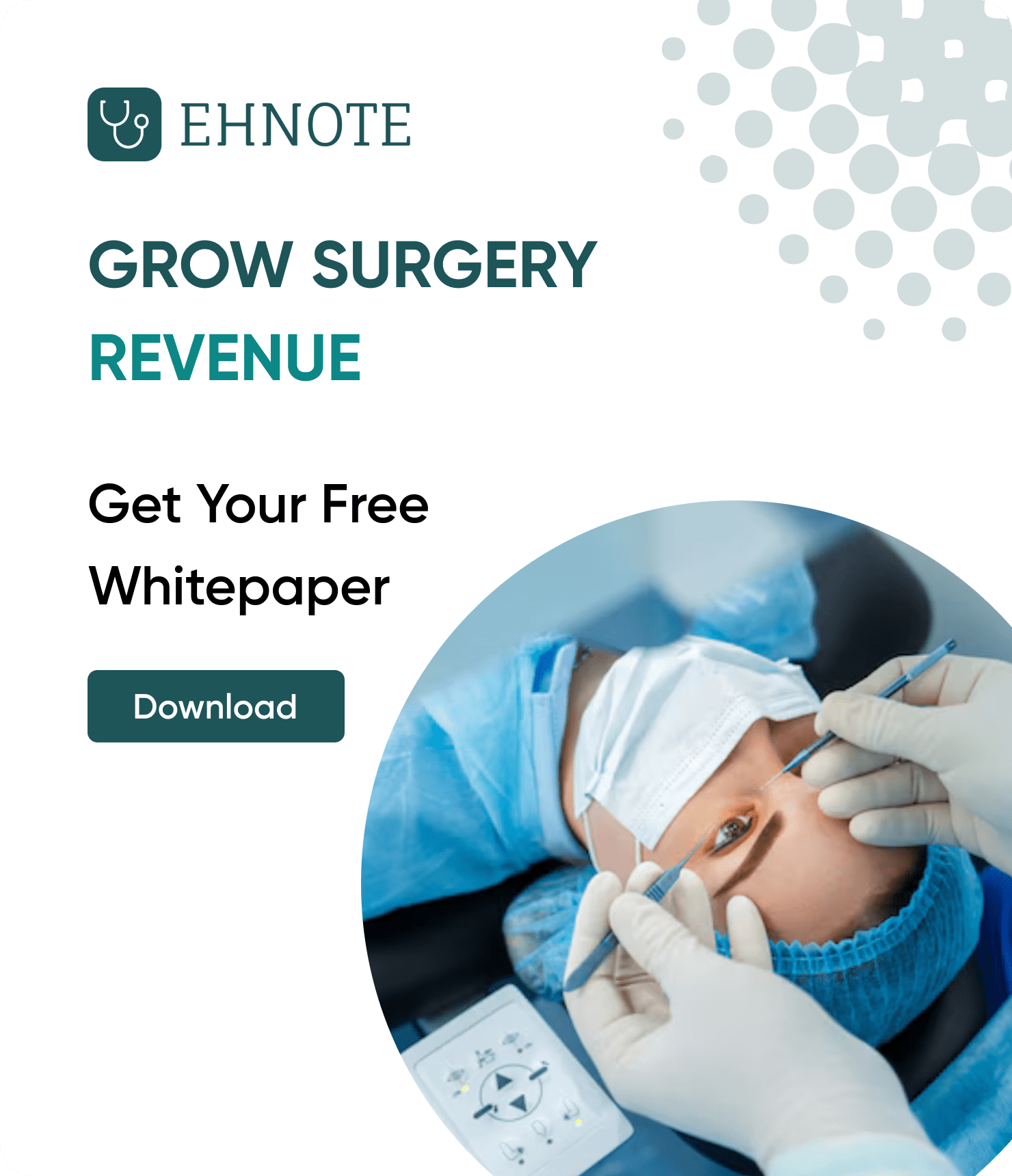8 Unique Benefits of an Integrated Ophthalmology EMR and ASC System

Unified Ophthalmology EMR and ASC System: 8 Benefits for Ophthalmologists
Precision, Efficiency, and Patient-Centricity – the new standards that define care delivery (as per the new value-based care delivery model, which attracts nearly 60% of the patient population according to HCPLAN). Many eye care practices are looking to shift their care delivery model to this Next Normal. Doing so, however, requires them to have the right technology in place.
Do current Ophthalmology EMRs available in the market meet the needs necessary to enable the value-based transformation?
A survey by Black Book Research revealed that more than 75% of the Ophthalmology EHR Software in practices do not support the value-based care model. Because they do not have the necessary functionalities, data capturing, and seamless integrations to support value-based care delivery in Ophthalmology practices.
Does your Ophthalmology EHR platform support Value-based care?
In this article, we’ll discuss the unique benefits of a unified Ophthalmology EMR and Ambulatory Surgical Care System and how it helps Eye Care Practices to Transition to a Value-based care model.
8 Unique Benefits of an Integrated Ophthalmology EHR and ASC (Ambulatory Surgical Care) System:
1.Helps track and orchestrate the patient's clinical journey in real-time
In the fast-paced landscape of eye care, real-time dynamic patient tracking is a game-changer. Think of it like fine-tuning schedules and resources seamlessly. With dynamic patient tracking system in place, patients wait less, get automatic updates, and benefit from proactive care.
Even though, Artificial Intelligence has already established itself in the healthcare but healthcare professionals have only scratched the surface and there is still a long way to go to derive maximum benefits from still evolving AI. Rather than robotics, AI in the healthcare usually refers to doctors and hospitals accessing vast volumes of data sets of potentially lifesaving information. The major areas covered by artificial intelligence in health include-
It makes the patient's journey much smoother, helping you deliver hassle-free eye care experience.
2.Provides Quick Access to Key Patient Data
EHNOTE ensures ophthalmologists have swift access to crucial patient data, facilitating well-informed decisions. From comprehensive diagnosis overviews to streamlined workflows, the system paves the way for a more efficient and patient-friendly environment.
3.Helps Understand the Patient’s Needs In-depth
A centralized hub for diagnoses, EHNOTE enables ophthalmologists to make informed decisions swiftly. The comprehensive view, improved accuracy, and faster treatment planning create a holistic approach to patient care, amplifying the overall clinical experience.
For Example, it helps you review a patient's glaucoma progression before deciding on treatment options.
4.Enhances Clinical Decision-Making with Complete Patient Journey on Your Fingertips
EHNOTE provides ophthalmologists with a side-by-side view of the entire patient encounter history. The visual parameters, accompanied by diagnostic and test images, simplify the analysis of patient progress, ensuring every detail is considered for personalized care. It helps with:
- Comparing pre- and post-operative findings to assess surgical outcomes and potential complications.
- Identifying patients with a history of specific conditions who might require additional monitoring or interventions.
5.Improves Visualization for easy identification and faster intervention
Witness the evolution of visualization in ophthalmology. EHNOTE's graphical representation of intraocular pressure (IOP), visual acuity (VA), cup-to-disc ratio (CDR), and refraction brings data to life. Early detection, trend analysis, and enhanced clinical decision-making become second nature, fostering a deeper understanding of patient conditions. For Example, it helps you with:
- Glaucoma management: Tracking IOP fluctuations and correlating them with changes in CDR over time can help monitor disease progression and guide treatment decisions.
- Refractive error correction: Plotting changes in VA after lens adjustments can visually confirm the effectiveness of the chosen correction and guide further fine-tuning.
- Macular degeneration monitoring: Visualizing changes in visual field tests over time can aid in early detection of disease progression and timely intervention.
6.Improves accuracy of ICD and SNOMED coding, minimizing errors and increasing efficiency
In the intricate world of ophthalmology, EHNOTE simplifies the complexity. Loaded diagnosis of ICD and SNOMED data ensures accurate coding, minimizing errors, and providing a robust foundation for streamlined workflows and efficient patient care.
7. Enhances Workflow Efficiency and Improves Patient Care Experiences
EHNOTE's integrated consent forms redefine the patient's pre- and post-operative experience. Reduced paperwork, faster processing, and improved data accuracy become the norm, enhancing patient care, experience, and compliance.
8.Facilitates Smoother Surgical Flow for Streamlined Workflows and Improved Outcomes
EHNOTE's ASC checklists stand as guardians of standardized procedures. From reducing preparation time to optimizing resource allocation, these checklists prioritize patient safety and the overall quality of care in ophthalmic surgeries. It provides you with:
- Procedure-specific checklists: Access customized checklists for different ophthalmic surgeries, ensuring all relevant steps are covered.
- Dynamic updates: Checklists can be dynamically updated based on patient factors or procedural changes, ensuring optimal care and adherence to evolving protocols.
- Real-time tracking: Integrate checklists with surgical progress tracking to monitor completion and identify any potential delays or deviations.
Transforming Care Models with Unified Ophthalmology EMR and ASC:
In the traditional realm of eye care, practices operate on a volume-based care model, focusing on the sheer number of patients seen. However, with EHNOTE's integrated Ophthalmology EMR and ASC, a shift towards a value-based care model becomes not just feasible but highly advantageous. The real-time insights, streamlined workflows, and comprehensive patient data empower practitioners to deliver more personalized, efficient, and outcome-driven care. Rather than merely aiming for quantity, this unified system facilitates a qualitative approach, emphasizing patient satisfaction, positive outcomes, and long-term wellness.
By harnessing the power of technology to align with value-based care principles, eye care practices can elevate their standards, ensuring that each patient receives not just eye care but an experience that prioritizes quality and effectiveness.
Conclusion:
EHNOTE's integrated Ophthalmology EMR and ASC isn't just a system; it's a revolution. From revolutionizing patient tracking to enhancing diagnostic precision, this comprehensive system addresses the unique challenges faced by ophthalmologists. As the industry evolves, so does the need for efficient, patient-centric solutions.
EHNOTE not only meets these demands but propels eye care practices into a future where quality, efficiency, and patient satisfaction converge seamlessly.
Embrace the future of ophthalmology with EHNOTE – where innovation meets excellence.
Schedule a Demo to Explore EHNOTE’s Ophthalmology-specific EHR Software Now!
